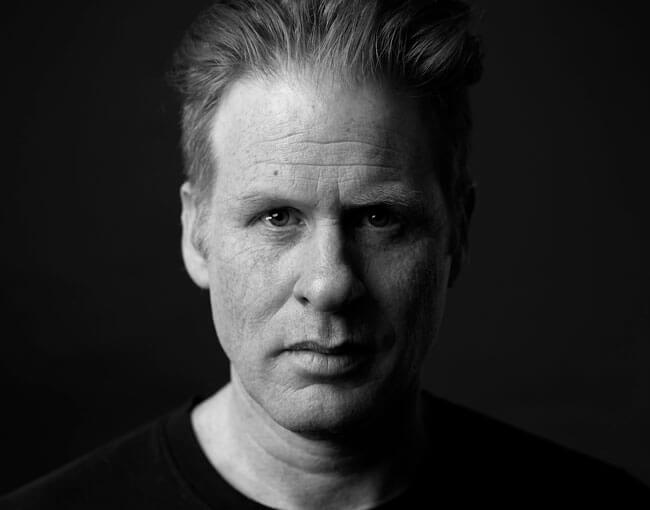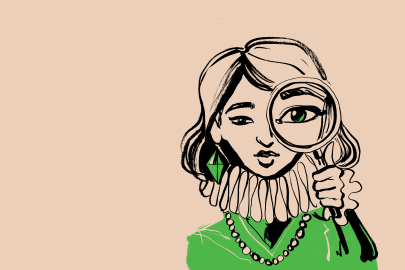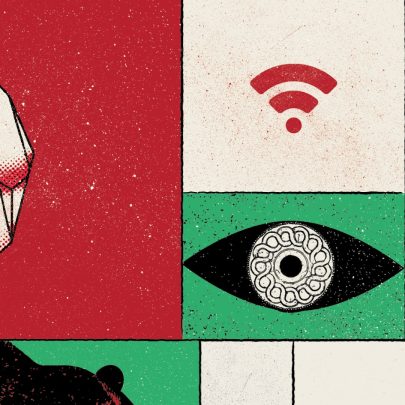Feb 27, 2020 People
The impact of Dean Poole’s graphic design company Alt Group can be seen all over Auckland, if you know what to look for. Now, he’s been made the New Zealand president of one of design’s most exclusive global organisations.
The Alliance Graphique Internationale is a super-elite organisation with secret-handshake undertones. Established in 1952, it’s one of the world’s premier congregations of graphic designers. With fewer than 500 members globally, the quality control is intense. A quick scroll through its membership list shows why: whether from Europe, the US or Asia, these are the very best, in everything from typography to experience design.
AGI now has its first New Zealand president: Dean Poole, the co-founder of Alt Group, whose subtle design touch is all over Auckland. Alt Group has been instrumental in creating the visual identities for our most important cultural institutions: Auckland Art Gallery, Auckland Museum, New Zealand Opera, Auckland University Press and Silo Theatre, among others. It’s currently helping to develop the identity for our largest infrastructure project, the City Rail Link. And it’s shaped the visual thinking of some of our most successful global brands, including Fisher & Paykel.
Alt Group has won hundreds of awards, and yet manages to keep its collective ego in check: it comprises only around 30 people, which Poole says is about optimal. “It’s like a classroom,” he jokes. “Any bigger and the parents start to complain.”
There are close links between Alt Group’s values and those of AGI: a belief in the way great visual communication can simultaneously reach out to a “universal humanism” while also expressing the specificities of a singular place. “Culture is like an accent,” Poole says. “The further you travel from home, the stronger it is. You can’t separate who you are and where you come from. There’s a freshness here in New Zealand around some of these universal [design] ideas. And it’s just [about] how we choose to take it to the world.”
In this sense, Poole’s presidency of AGI is an ideal platform. But there’s a political dimension to this, too. AGI has long espoused the idea that intelligent, innovative graphic design transcends borders and languages. It was a very deliberate decision, Poole tells me, to hold AGI’s 2018 annual conference in Mexico, given Donald Trump’s border-wall bluster and anti-immigrant rhetoric. The year before, it was in Paris — again, an implicit acknowledgement of the ways Western European attitudes towards borders are quickly, and dangerously, changing.
Poole thinks New Zealand designers could have an important role to play in this space because of our increasingly independent thinking about design’s role in a democratic society. “What is ours?” he asks, rhetorically. “Trying to define it would probably kill it, but there are some guiding principles that are here, and starting to emerge.” One of these, he says, is a “playful” intellectualism. “We have something serious to say, but we say it in a way that takes the edge off.
Whether it’s David Lange saying ‘I can smell the uranium on your breath’, or Taika Waititi dealing with complex social issues in a way that we all relate to, or Air New Zealand taking the edge off a flight through a safety video. These are very much part of a pattern.”
He also suggests that there’s a “raw sophistication” in the way we relate to materials. As a culture, “we’re not [about] polished marble floors. There’s a harvesting of raw materials that remind us of the power of nature.” He gives the use of skip-dressed timber as an example.
Then there’s the fact that, in New Zealand product design, material performance very often leads form. We can see this in a Fisher & Paykel DishDrawer, and in the design and evolution of the Allbirds shoe. “It’s because we’re being pragmatic,” Poole says, “and a lot of that comes from our agricultural background. A lot of our great innovations come from that kind of sensibility.”
Poole’s presidency of AGI, then, is timely: not just an acknowledgement of his own career trajectory but a chance for New Zealand designers to lead, rather than chase, international conversations. Central to this, Poole believes, is our diversity and, in particular, the ways Maori and Pacific visual cultures express who we are. On one level, this is about their “pattern languages”. But it’s also about understanding what underpins them: a world view connected to our landscapes and migration stories, and the way designing from nature can connect us to our biological selves.
“There’s an aspect of nature that should always inform who we are and what we do,” Poole says, “because we’re quite close to it. And we’re very lucky, and we should treasure that.”
?Photography by: Toaki Okano.
This article was first published in the March – April 2019 issue of Metro.






